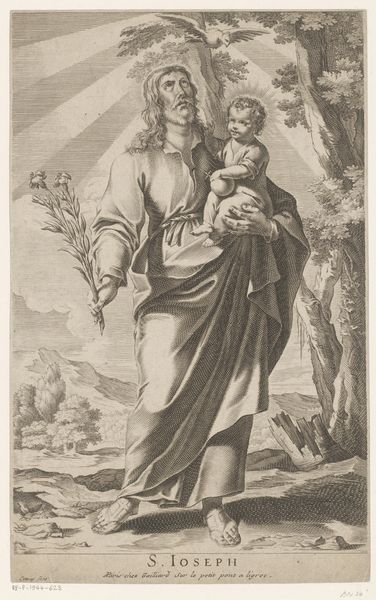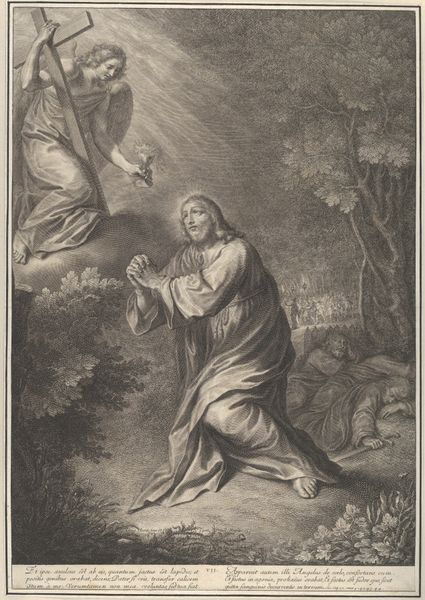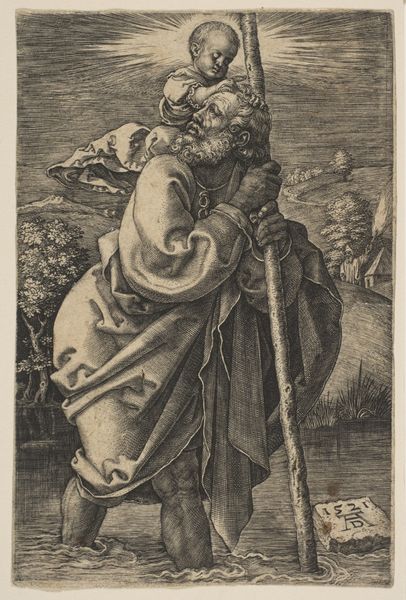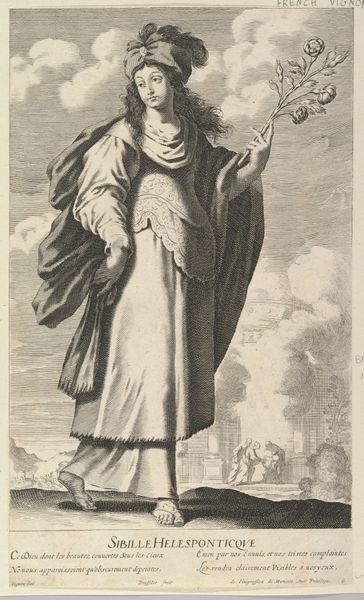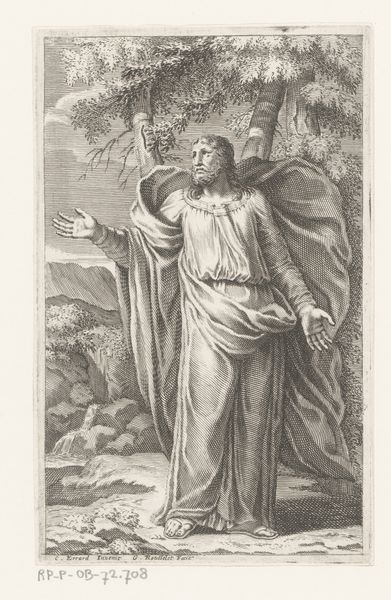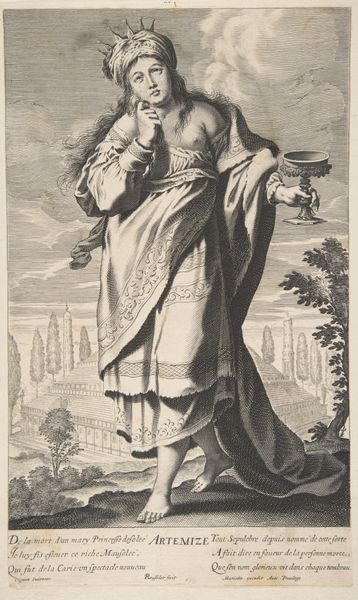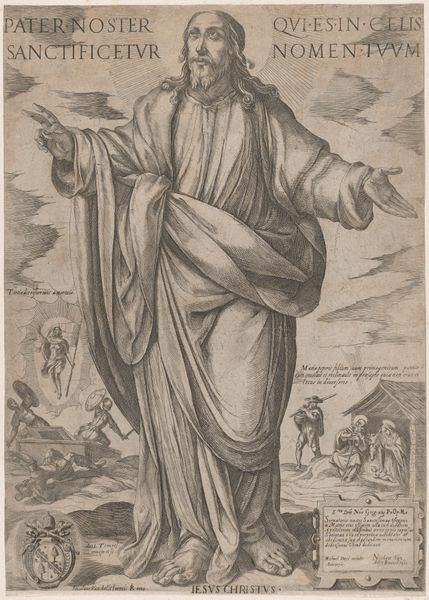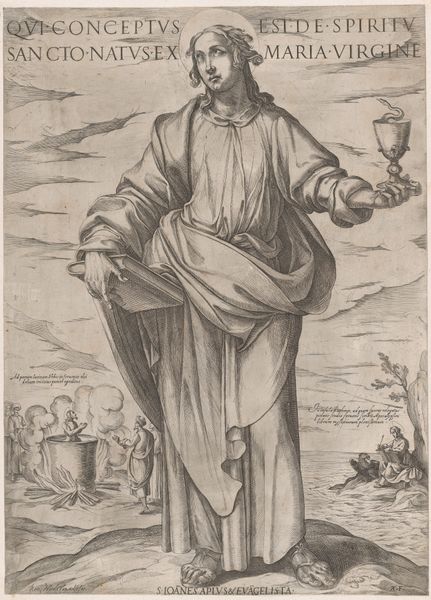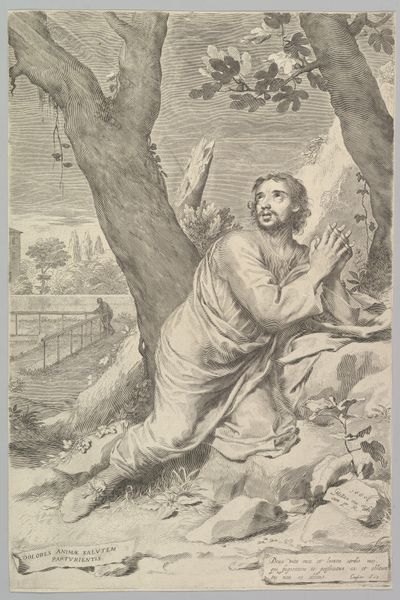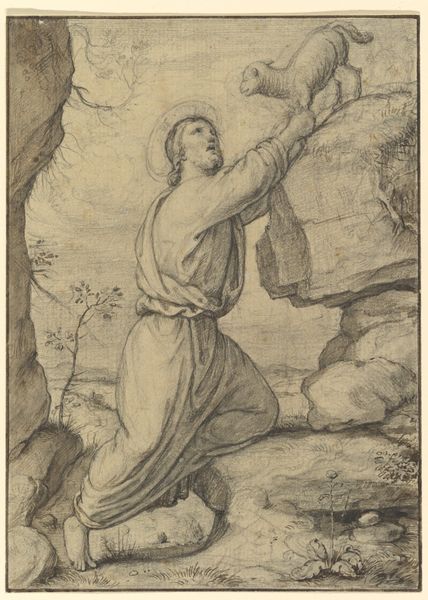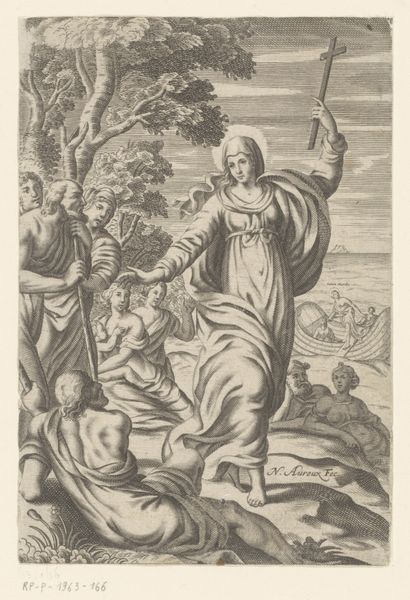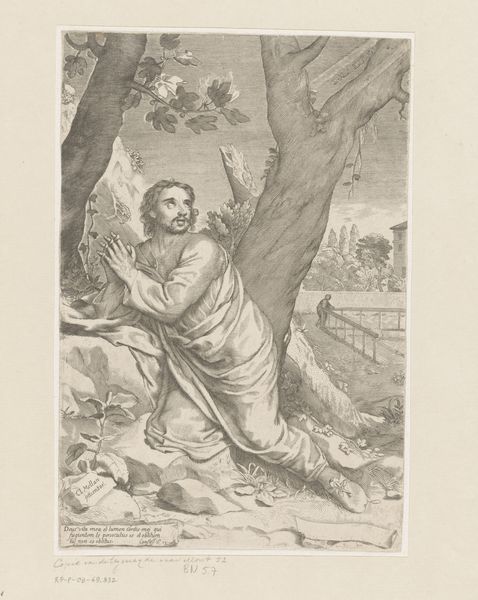
drawing, print, engraving
#
drawing
#
baroque
# print
#
figuration
#
cross
#
history-painting
#
engraving
#
christ
Dimensions: Sheet: 13 1/8 × 8 13/16 in. (33.4 × 22.4 cm) Plate: 13 1/16 × 8 5/8 in. (33.1 × 21.9 cm)
Copyright: Public Domain
Curator: This is "The Savior," an engraving dating between 1620 and 1670 by Grégoire Huret, a French artist of the Baroque period. It is currently housed at the Metropolitan Museum of Art. Editor: It’s a rather serene, if slightly unsettling, image. The figure dominates the frame, but that melancholic expression and the contrasting sizes of the crosses give me pause. Curator: That's a fascinating reaction. The differing sizes, I believe, are central to understanding the piece. The smaller cross offered, and the much larger cross He bears upon His shoulder are signifiers of symbolic weight. Huret masterfully illustrates Christ’s role as a beacon. Editor: Yes, but whose burden is He inviting us to share? Look at the Latin inscription at the bottom: "Si quis vult post me venire, tollat crucem suam” which translates to “If anyone would come after me, let him deny himself and take up his cross and follow me.” This resonates today as much as it did centuries ago, reminding us that true faith and solidarity demand personal sacrifice. Curator: Precisely! Huret connects to a deeply-held cultural memory, extending the Savior’s compassion to all humanity and time. That smaller cross held aloft offers initiation into something bigger and eternal, doesn’t it? Editor: Eternal perhaps, but not detached. These historical narratives surrounding salvation have earthly implications. Think of how these themes of sacrifice and obedience were employed, often coercively, to maintain power structures throughout colonial history. The symbolism becomes complicated, entangled with systems of oppression. Curator: A fair critique. Symbolism exists on a spectrum, of course. Huret was clearly working within the Baroque style, which embraced dramatic composition and strong emotional resonance, and it does bring inherent tensions between transcendence and embodiment, hope and despair. Editor: Right. Understanding that tension – recognizing how an image can simultaneously inspire devotion and reinforce inequality – is crucial. It challenges us to look beyond simple reverence, towards engaged analysis. Curator: An image offering layered perspectives and compelling dialogue, even centuries later. Editor: Exactly. Art is never just about beauty or skill, it's a record of our past, a reflection of our present, and a provocation for our future.
Comments
No comments
Be the first to comment and join the conversation on the ultimate creative platform.
